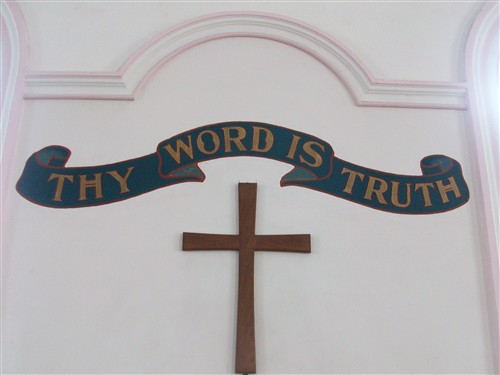Our Story
This painting was completed recently by Eve Anderson. It is very atmospheric and tells the powerful story of the cross. But Our Story linked with the cross has continued since Rev Charles Haddon Spurgeon laid the foundation stone in 1860 (See About Us).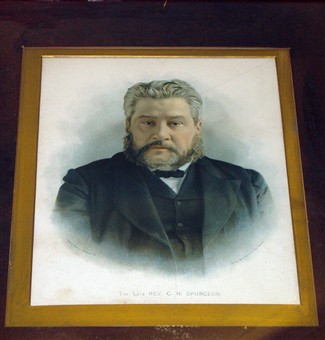
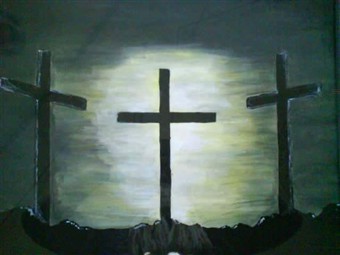
In those days a Mr Charles Rigby, one of the men who undertook the building of the breakwater, took a great deal of interest in the Baptist cause and he gave his full support to the building of the chapel for the English people. It was Mr Rigby who designed the chapel.
On September 6th 1860, the Prince of Preachers, Reverend Charles Haddon Spurgeon, came to conduct services at Holyhead. Great preparations were made for his coming. 'Ucheldre Park' was secured for the occasion where a marquee was erected to hold 4000 people. Cheap fares were issued by the Railway Company to people who travelled from all parts of North Wales. The marquee was packed, though up to 3s. 6d (18p) was charged for seats. Rev Spurgeon preached twice, and the time between the two services was spent laying the foundation stone of the present chapel.
When his son, Reverend Thomas Spurgeon, relinquished his father's old church at the Metropolitan Tabernacle, London, the trowel with which his father had laid the foundation stone, was sent back to New Park St Chapel and is now to be seen on display in the chapel. Inscribed on it are the words:
'Presented to the Rev. C.H.Spurgeon on his laying the foundation stone of New Park St Chapel, September 6th 1860.'
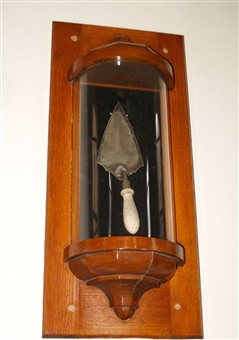
From the stone laying service, Rev. Spurgeon visited the widow of Rev. Christmas Evans, and after seeing her circumstances, he promised to send her 5s (25p) a week to the end of the year, but she continued to receive that amount until she died.
The building contractor was Mr Henry Parry, who subsequently moved to Brooklyn, New York. His estimate for building the chapel was £1031.
But was the original chapel just standing room only? When the pews were dismantled in 2010 to make way for modern and comfortable chairs some writing was discovered on the underside of a pew............................... W. Roberts B.C. 1872 We make the assumption that B.C. means Baptist Chapel and offer a guess that Mr Roberts was maybe one of the joiners who assembled the pews.
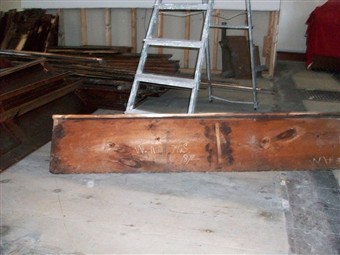
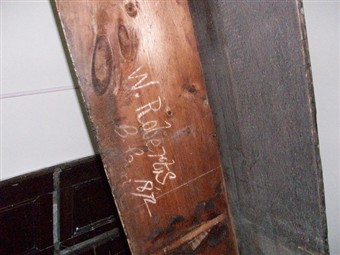
Sitting or standing, it would seem that around the turn of the 20th Century, the church was heavily populated, so much so that in 1901 Baker St Mission was started under the oversight of the current Pastor, Reverend Gomer Evans.(See Pastors) Incidentally, the Pastor's salary in 1904 was £104 per year so it is safe to assume that his £2 per week was certainly earned.
When 1914 came it was the beginning of a time of great stress and great loss and the aftermath of WW1 was a time of greater poverty for all around. It also generated a response from the churches. The letter below is from the Lancashire and Cheshire Association of Baptist Churches.
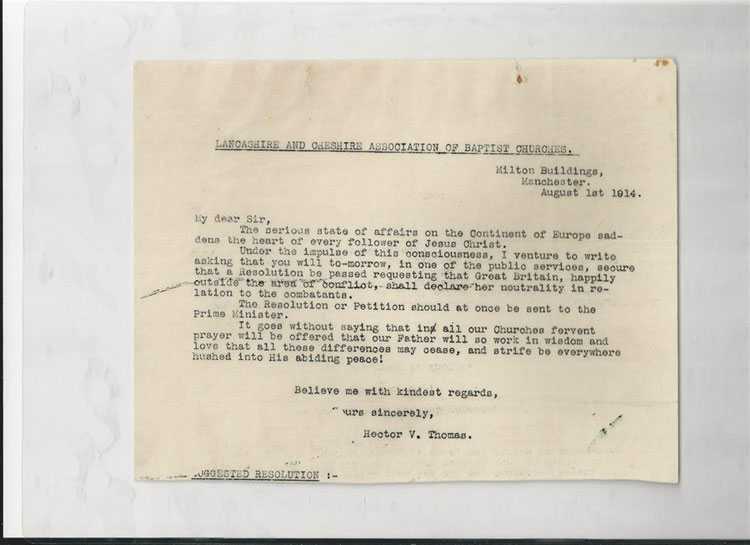
Of course the World War 1 Pastor of the church, Reverend Abraham Rees-Morgan served in the Middle East and was awarded the Military Cross for his services as Padre to the forces.
The period of the 2nd World War was also a difficult time in everyone's life and church life was no exception. Below is an extract from Deacon's Meetings held in 1947 and 1948.
Physical and Spiritual Delapidation
This is an extract from a Deacon's Meeting in 1947:-
The Practical
'The secretary while submitting his report stated that the condition of our sanctuary in general was appalling and sadly in need of our closest attention. The ceiling had been repaired and the remains of the ventilator trunk removed and the aperture sealed up with sheet lead. Before renovation is commenced the woodwork of some of the pews need repairs and a great quantity of black-out nails removed from all the window frames. The coconut matting along the aisles has become worn and ragged whilst the hot-air wells are similar to dustbins. The matting surrounding the wells are dangerous to the feet.............................................
The heating installation brickwork seams have perished. This should be removed and repointed. The two bottom segments of the furnace have expanded due to dead heat becoming unjointed and when contraction set in these segments failed through distortion to return to their original shape and setting. The humidifying tank had collapsed due to excessive corrosion. The chimney is in a precarious state and suggests a complete collapse. We have expected too much from the chimney, being only temporary in structure, which should have been replaced by a substantial brick chimney many years ago.
The schoolroom vestry is practically beyond repair whilst the floorboards including the schoolroom in some parts should be renewed also renewing defective joists.
Taking every item into consideration, the church is confronted with a formidable task, a task that must be faced up to without further delay. We are confronted with this excessive delapidation because the maintenance in the past, especially in the pre-war years, has not been carried out faithfully.
We trust that at this period of our Church History, all will shoulder their responsibility and deem it a privilege to restore this heritage of ours to a sanctuary worthy of this generation.'
This is an extract from a Deacon's meeting in 1948
The Spiritual
'............................................ with reference to the Young Peoples Fellowship meeting. The Secretary, emphasising the necessity of the knowledge and study of the Bible, made reference to the Baptist Union's grave concern because of the lamentable ignorance of the truth for which we stand resulting in an impoverished Christian experience and therefore exhort us to take advantage of our liberty and freedom which is our heritage for the purpose of the gospel, with a renewed intense study of the Bible so that our witness may be real and our message true, revealing that as Christians we possess the secret of a triumphant life that men may turn to us when they realise their need.'
It is interesting to see the challenges of 70 years ago and realise that the maintenance of our place of worship is unchanging although I am certain that the interior of the building would be a pleasant surprise if they were now able to see it. Another matter that does not change is the spiritual need of the local population and the focus that should be on the Word Of God.
